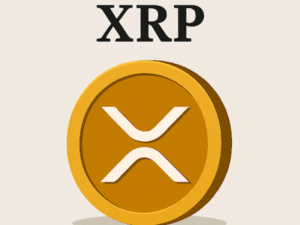
Arbitrage trading has long been a staple of financial markets, and its application in the world of decentralized finance (DeFi) is growing rapidly. Solana, a blockchain renowned for its speed, low fees, and robust ecosystem, offers fertile ground for arbitrage opportunities.
This article is for readers who are new to the field, who have some or no technical skills and who want to explore arbitrage on Solana. We cover foundational concepts like DeFi DEXes, liquidity pools, and specific platforms such as Raydium, Orca, and Jupiter.
The Basics of Arbitrage
Arbitrage involves exploiting price differences for the same asset across different markets. On Solana, this could mean identifying discrepancies between decentralized exchanges (DEXes) or liquidity pools. The goal is to buy low in one market and sell high in another, pocketing the difference as profit.
Why Solana is Ideal for Arbitrage
Solana’s DeFi ecosystem consists of interconnected protocols that enable lending, borrowing, trading, and other financial activities through smart contracts. These self-executing code snippets remove the need for trusted third parties, creating a truly permissionless financial system.
The network offers several distinct advantages for DeFi applications:
- High throughput: Solana processes up to 65,000 transactions per second, enabling near-instant trade execution and settlement.
- Minimal fees: Transaction costs are fractions of a cent, making micro-arbitrage opportunities viable that would be unprofitable on other blockchains.
- Composability: DeFi protocols can seamlessly interact with each other, enabling complex trading strategies.
- Developer-friendly environment: Solana’s programming model facilitates the creation of sophisticated financial applications.
These technical capabilities have attracted significant liquidity to Solana’s DeFi ecosystem, creating a fertile environment for arbitrage opportunities.
Decentralized Exchanges (DEXes) on Solana
Decentralized exchanges form the backbone of Solana’s trading ecosystem, enabling peer-to-peer cryptocurrency trading without centralized control. Unlike centralized exchanges where users deposit funds into company-controlled wallets, DEXes on Solana allow traders to maintain custody of their assets until the moment of trade execution.
DEX Models on Solana
Solana DEXes typically implement one of two models:
- Order book model: Similar to traditional exchanges, with buy and sell orders matched based on price and time priority.
- Automated Market Maker (AMM) model: Utilizes liquidity pools and mathematical formulas to determine asset prices.
Many Solana DEXes employ hybrid approaches, combining elements from both models to maximize liquidity and improve trading efficiency. This creates unique opportunities for arbitrage between different market mechanisms operating on the same blockchain.
Liquidity Pools Explained
Liquidity pools are central to Solana’s DeFi ecosystem and critical for understanding arbitrage opportunities. They replace traditional order books with automated mechanisms that ensure constant liquidity for token swaps.
How Liquidity Pools Work
Liquidity pools consist of pairs of tokens locked in smart contracts (e.g., SOL/USDC). Traders swap tokens against these pools rather than matching orders with other traders. Most AMMs use the constant product formula:
x×y=k
x×y=k
Where:
- x
- x = Quantity of Token A (e.g., SOL)
- y
- y = Quantity of Token B (e.g., USDC)
- k
- k = Constant value that remains unchanged during trades
When a trader swaps SOL for USDC, the pool’s SOL decreases while its USDC increases, causing the price of SOL relative to USDC to rise due to the formula’s balancing mechanism.
Innovations in Liquidity Pools
Solana’s liquidity pools have evolved beyond basic AMM models:
- Concentrated Liquidity: Platforms like Orca allow liquidity providers to allocate capital within specific price ranges for greater efficiency.
- Dynamic Fees: Adjust trading fees based on market volatility or pool usage.
Arbitrage Strategies on Solana
Arbitrage strategies on Solana typically fall into three categories: exchange-to-exchange arbitrage, triangular arbitrage, and DeFi arbitrage.
1. Exchange-to-Exchange Arbitrage
This strategy involves exploiting price differences for the same token between two exchanges. For example:
- Buy SOL on Exchange A at $20.
- Transfer SOL to Exchange B where it’s priced at $20.50.
- Sell SOL on Exchange B for a profit of $0.50 per token (minus transaction fees).
Solana’s fast transaction speeds make this strategy viable even when price gaps are small.
2. Triangular Arbitrage
Triangular arbitrage leverages price discrepancies among three currency pairs within the same exchange or across multiple DEXes. For example:
- Start with SOL and trade it for USDC on Orca.
- Swap USDC for BONK on Raydium.
- Convert BONK back to SOL on Jupiter.
If the final amount of SOL exceeds the initial amount after accounting for fees, the trade is profitable.
3. DeFi Arbitrage
DeFi arbitrage involves exploiting price differences between liquidity pools on decentralized exchanges like Raydium and Orca. For instance:
- Swap SOL for USDC on Orca where the price is favorable.
- Swap USDC back to SOL on Raydium at a higher rate.
- Pocket the difference as profit.
This type of arbitrage often requires careful calculation of slippage and fees.
Major DEXes on Solana
Understanding the strengths and weaknesses of Solana’s DEXes is crucial for identifying arbitrage opportunities.
Orca
Orca is known for its user-friendly interface and innovative liquidity model called “whirlpools.” These concentrated liquidity pools allow providers to focus their capital within specific price ranges, reducing slippage and improving efficiency.
Strengths:
- High liquidity in stablecoin pairs.
- Intuitive interface suitable for beginners.
- Unique whirlpool model creates specialized arbitrage opportunities.
Raydium
Raydium combines AMM functionality with Serum’s order book system, creating hybrid trading opportunities.
Strengths:
- Deep liquidity across major trading pairs.
- Integration with Serum enables arbitrage between AMM pools and order books.
- Fusion Pools offer additional yield opportunities.
Jupiter
Jupiter functions as a DEX aggregator rather than a standalone exchange, scanning multiple platforms to find optimal swap routes.
Strengths:
- Aggregates liquidity from multiple DEXes like Orca and Raydium.
- Supports advanced trading features like limit orders.
- Ideal for cross-DEX arbitrage strategies.
Executing Arbitrage Trades on Solana
Step-by-Step Process
- Research Opportunities: Use tools like Jupiter or DEX APIs to monitor prices across platforms.
- Prepare Your Wallet: Set up a Solana wallet (e.g., Phantom) funded with SOL for transaction fees.
- Execute Trades:
- For exchange-to-exchange arbitrage: Transfer tokens between exchanges and sell at higher prices.
- For triangular or DeFi arbitrage: Execute swaps directly within DEX interfaces or via bots.
- Account for Costs: Calculate transaction fees, slippage, and MEV tips before executing trades.
Challenges in Solana Arbitrage
While Solana offers many advantages for arbitrage trading, there are challenges:
Network Congestion
During peak demand periods, transaction speeds may slow slightly despite Solana’s high throughput.
To mitigate this, use wallets prioritizing transaction speed or integrate MEV-aware infrastructure.
Tight Price Gaps
Price discrepancies across exchanges are often small due to market efficiency.
Because of this, it is best to focus on less liquid tokens or use automated bots capable of micro-arbitrage.
Fees and Slippage
Unexpected costs can erode profits if not accounted for properly.
It is essential to factor all costs into calculations before executing trades and test strategies with small amounts initially.
Automating Arbitrage with Bots
For advanced traders or developers, bots offer a way to automate arbitrage strategies efficiently.
Key Features of Bots
- Monitor prices across multiple DEXes in real-time.
- Identify profitable opportunities quickly.
- Execute trades faster than manual methods.
Building Custom Bots
Developers can use tools like Solana’s Web3.js library or Python scripts integrated with DEX APIs to create custom bots tailored to specific strategies.
Case Study: Triangular Arbitrage Example
A trader executed the following sequence:
- Converted 187 SOL → 17,534 USDC on Orca.
- Swapped 17,534 USDC → 905M BONK on Raydium.
- Converted 905M BONK → 1,382 SOL on Jupiter.
Despite gross profits exceeding 1,194 SOL after fees (including MEV tips), net profit was reduced to 95 SOL—a reminder that careful cost analysis is essential in arbitrage trading.
Advanced Strategies
As traders gain experience, they can explore more sophisticated approaches:
Statistical Arbitrage
Analyze historical price correlations between tokens to identify temporary deviations likely to correct over time.
Multi-DEX Routing
Split trades across multiple DEXes to minimize slippage while maximizing returns along complex paths.
Flash Loans
Use uncollateralized loans to amplify capital efficiency during arbitrage trades by borrowing funds temporarily without upfront collateral requirements.
Arbitrage on Solana: Is it Feasible?
Arbitrage trading on Solana combines technical skill with strategic thinking in an ecosystem designed for speed and efficiency. Beginners can start by manually executing simple trades using platforms like Orca or Jupiter while gradually exploring automation through bots or advanced strategies like triangular setups and flash loans.
The key to successful arbitrage lies in understanding liquidity mechanics, comparing DEX features effectively, managing risks carefully, and staying informed about developments within Solana’s rapidly evolving DeFi landscape.
With practice and refinement of techniques over time, traders can unlock consistent profits while gaining deeper insights into decentralized finance as a whole.
Solaxy: A Layer 2 Solution Boosting Solana’s Performance
On the subject of Solana, a new project worth mentioning is Solaxy, a cutting-edge Layer 2 solution designed to enhance the Solana blockchain by improving its scalability, transaction speed, and overall efficiency.
By addressing key issues such as network congestion and transaction failures, Solaxy significantly strengthens blockchain reliability and optimizes operational performance. Its seamless integration into the Solana ecosystem enhances the network’s capabilities, marking a substantial technological advancement in blockchain development.

 3 days ago
22
3 days ago
22









 English (US) ·
English (US) ·